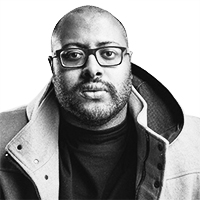Though the medical genre debuted in 1951 with the serialized drama City Hospital, it didn’t achieve popularity until dramas like Ben Casey and Dr. Kildare centered attractive leading men Richard Chamberlain and Vince Edwards (respectively) as preternaturally skilled physicians. After the genre’s runaway success, it began to dabble in the soapiness of mixing medical drama with the personal lives of its photogenic leads. Series like General Hospital, St. Elsewhere, ER, and Chicago Hope paved the way for television’s most popular current medical drama—Grey’s Anatomy—which reaches its 300th episode this week. It’s easy to see why Grey’s is popular; Shonda Rhimes followed the model of soapy hospital dramas and ratcheted up the sex while also telling the story from a female perspective. Then there’s the case of television’s latest runaway success: ABC’s The Good Doctor.
The Good Doctor has not only managed to dethrone NBC’s This Is Us as the No. 1 network television drama (with a whopping average 17.8 million viewers and a 4.1 demo rating in the 18-49 demographic), but it’s also the most successful show in the 10 p.m. timeslot since CSI: Miami in the 2006-2007 television season. Since its success, critics have demanded to know who exactly is watching this show. The show isn’t airing on CBS, so it’s not coasting on older viewers who want a cocky white guy solving crimes for them. It’s a melodrama, but it’s not particularly a soap, which means that even critics who love Empire, This Is Us, or Grey’s wouldn’t necessarily tune in.
It actually harks back to dramas from the ’50s where the focus is solely on a hero’s skills, not his personal life—in this case Freddie Highmore’s Shaun Murphy, an autistic surgeon with savant syndrome, and how he solves medical mysteries. He’s also aided by several other highly skilled doctors who think outside the box like Antonia Thomas’ Claire Brown and Nicholas Gonzalez’s Neil Melendez. The melodrama comes from the fact that an autistic surgeon has been thrown into a hospital where he’s often mistrusted by his colleagues and patients, and the over-the-top medical cases that, so far, have involved performing surgery on a liver on a highway, saving multiple victims of a bus crash, and parents concealing their son’s cancer from him.
The series’ focus on skill over personal drama shouldn’t surprise those who are familiar with showrunner David Shore’s previous series House, which starred Hugh Laurie as an extremely skilled doctor and focused mostly on medical drama before it flew off the rails and devolved into ’90s Days of Our Lives plotlines like Dr. House crashing his car through Dr. Cuddy’s house. Though there are tinges of personal drama mixed into the show, for the most part it’s about doctors making tough calls when it comes to ensuring the safety of their patients.
It’s a show that perhaps resonates so much in America right now because no matter where your politics may fall, the news features a daily drama of politicians battling over health care bills that will ultimately affect their fellow Americans’ lives more than it will theirs. Perhaps for families struggling with or fearful of medical disasters, there’s some catharsis in watching doctors skip the general soapy antics of having sex with one another in the break room and instead focusing on how they can save a life.
The show is no different from This Is Us in how it’s specifically engineered to draw tears from its audience. Shaun’s journey is one you end up rooting for and, while he’s emotionally withdrawn due to his autism, you find yourself a conduit for those emotions he can’t express. Crying on a Monday night can honestly feel like one of the greatest things in the world in a time where merely turning on your television can fuel a panic attack. The comfort of the medical drama procedural which people have watched for decades helps you foresee where most of the stories will be going; it’s just up to Shore and company to guide you there competently.
What might be lost in all of this is that the series is also produced by Daniel Dae Kim, who recently departed Hawaii 5-O because he and his co-star Grace Park weren’t paid as much as their white counterparts. Kim, who is Korean, first began developing the series with his company 3AD after the series it’s based on, also titled The Good Doctor, was a huge success in Korea. Korean dramas run high on emotion, which is what draws in viewers. “When they are sad, they are 100 percent sad. When they are in love, they are 100 percent in love. That’s why you want to watch their stories, because they feel so deeply about their own situations,” Kim explained in an interview with The Korea Times. But he also knows that Korean formats run very quickly because after their emotional stories are resolved, there’s nowhere else to go. (Tell American dramas that.) The Good Doctor’s medical genre is what made it viable as an American television series: “With Shore, our showrunner, we were all thinking about where to take characters in the future. That gives more freedom to American TV shows.”
The one thing you mustn’t forget about The Good Doctor is that fact that the title isn’t ironic, like The Good Wife, where it referred to Alicia Florrick as the archetypal “good” woman standing by her cheating and philandering man. “Many people on American television, they have drinking or womanizing or gambling problems. So they become anti-heroes, but this character is only trying to do his best and he has challenges that are not in his control. And you can root for him with your heart,” Kim said. The characters on The Good Doctor are actually just really good people. Why wouldn’t you invite them into your home?






